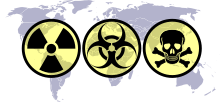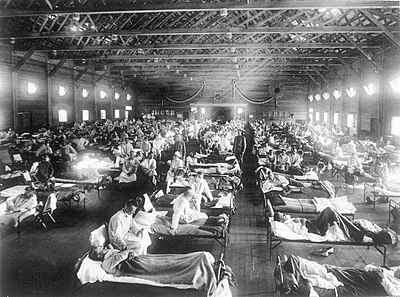A Brief History
On October 29, 1955, the Soviet battleship Novorossiysk struck a mine in Sevastopol Harbor and sank, taking the lives of 608 crewmen. Even when we think a war is over, the terrible price cannot yet be calculated, because wars have ways of continuing to kill past the date History claims ended the war. Here we list 8 of those sad ways wars continue to kill people beyond what seems to be their time frame.
Digging Deeper
1. Anti-ship mines.

As noted above, the former Italian battleship, Giulio Cesare, renamed by the Soviet Union the Novorossiysk after the USSR confiscated the ship in 1949. Commissioned in 1914 in time to participate in World War I, the battlewagon was rebuilt from 1933 to 1937, given increased armor and far more powerful engines. Displacing 25,000 long tons loaded, she was 577 feet long and 91 feet wide, with a crew of 1000 officers and men. With a main battery of 2 X triple 12 inch gun turrets and 2 X double 12 inch gun turrets, the secondary battery consisted of 32 4.7 inch and 3 inch guns, as well as 3 torpedo tubes. The Giulio Cesare survived the famous British air raid on Taranto Harbor, convoy protection duty, the Battle of Cape Spartivento and the First Battle of Sirte. Two world wars could not sink the mighty ship, but a left over sea mine laid by the German military during World War II sank the ship in 1955, 10 years after the war was supposedly over. The 5 US Navy ships lost to naval mines during the Korean war are believed to have been sunk by mines laid during that conflict, but 1 or more may have struck left over World War II mines. In 2010 a South Korean Navy ship was sunk by a Korean War mine, killing 46 men around 47 years after the war supposedly ended! With untold thousands of naval mines sown across oceans and harbors all over the world, it is almost inevitable that more lives will be lost to old mines accidentally struck by ships or pulled up in fishing nets. Many of these weapons have been scooped up by minesweeping ships and disposed of, but even the moored variety can break loose and float around for decades without being disposed of properly.
2. Land mines.

It is estimated that about 70 people EACH DAY are inadvertently killed or maimed by landmines, making these evil things the most likely to kill you after a war is long over. Estimates of 110 million land mines buried around the world and another 100 million in storage, just waiting for the militaries of the world to plant are sobering numbers indeed. Sad, pathetic photos of maimed children lead many to join the anti-landmine movement, but even if the deadly devices were outlawed immediately, people would continue to die and be maimed from the millions already out there for decades to come. The worst areas for the wanton use of landmines include Afghanistan, Angola, Iraq, Cambodia, and Laos. More countries are also bedeviled by the hidden danger of mines.
3. Unexploded ordnance.
Artillery and mortar shells, aerial bombs, grenades, rockets and demolition charges do not always explode when launched at the enemy. These so called “duds” often cause death and maiming injuries decades after the war in which they were used. A prime example is the city of Ypres (or Leper) in Belgium where incredible numbers of World War I ordinance was lobbed back and forth between the Germans and the Allies between 1914 and 1918. In the Century since the war ended (almost century…), over 360 people have been killed by previously unexploded ordnance and more than that number wounded. Especially sinister are the chemical munitions that are occasionally dug up by plowing fields or construction. Mustard gas is still extremely potent after all these years, capable of inflicting horrible blisters or even death. Although the World War I battlefields are most famous for their concentration of unexploded ordnance, most of the world has at least some of this dangerous war trash laying on top or below the surface, or in the water. The cluster bombs used over South East Asia during the Vietnam War left an incredible number of small, unexploded little bombs often picked up and played with by children. Likewise, the Middle East is also littered with the same sort of remnants of the wars fought there, and the children die in the Middle East just as they die in South East Asia. Even in large European city centers (London, Berlin, etc) every so often a large bomb is found, just waiting to be accidentally detonated.
4. Disposed of ordnance.
Off the coasts of Germany and Denmark, hundreds of locations where munitions were dropped into the ocean dot the sea floor, with artillery shells, grenades, aerial bombs, naval shells, and chemical weapons (poison gas such as nerve gas and mustard gas) included. Even naval mines have been tossed overboard for disposal at sea, a particularly dangerous practice. These items sometimes are washed up on shore, and are sometimes pulled up with fishing nets or anchor lines. Who knows what horrors await when the tons and tons of nuclear and chemical weapons dropped in the ocean start corroding through their containers!
5. Politics, revenge, nationalism.

Often times it seems wars end but the war itself and its ensuing treaties only lead to new wars. The harsh terms of the Treaty of Versailles after World War I created so much animosity toward the Allies from Germany that it may well have led to the rise of militant factions in Germany, resulting in World War II. The punitive drawing of borders by the victors in wars often leads to new war later by the aggrieved people or nation. People that have been murdered, raped, and plundered have a tendency to hold a grudge. The Soviet Union was so thoroughly traumatized by World War II that the build up of their armed forces continued unabated after the war, leading to conflicts between communist and democratic countries and the nearly 5 decade Cold War. World War I hurt the Russian people so bad it resulted in the Russian Revolution, and the creation of the Soviet Union. Using wars that have ended as a reason to do so, countries spend ridiculous amounts of money and effort to build and maintain mighty military forces, capable forces that seem a shame not to use…
6. Proliferation of arms.

Any time a war ends, there are all sorts of arms and munitions left about for civilians or soldiers leaving the service to pick up and take home. Often these former weapons of war are used as the tools of terrorists, criminals, or insurgents. For example, over 75 million AK-47 assault rifles have been produced, and another 25 million or so related guns. Of those, literally millions are unaccounted for. War surplus arms have flooded the world throughout history, and continue to do so, both through authorized sales and through thefts and lost weapons. Lee Harvey Oswald used a World War II surplus Italian Carcano rifle to kill John F. Kennedy in 1963, 18 years after the war ended (or so the story goes…). The number of people killed with such former war guns is incalculable.
7. Illness, famine.

Wars have a terrible knack for disrupting the production of food, as well as the distribution of food that is still being produced. This malnutrition results in starvation and weakness even after the war is over, with many people later dying of disease and the effects of malnutrition after the war has ended. The world-wide Spanish Flu epidemic after World War I was probably due in part to the malnutrition caused by wartime food shortages, crowded refugee camps, and people made homeless. Across the Globe, about 500 million people suffered from the Spanish Flu, and of those as many as 100 million died(!), far more than killed during combat in The Great War. World War II left tens of millions of people homeless and starving, many of which undoubtedly died from illnesses they normally could have survived. Additionally, soldiers and civilians that contracted diseases during the wars may well end up dying after the war is over, spending their remaining time adversely affected by the disease contracted during the war. (An example is Malaria. I had an uncle that suffered from the after effects his entire life, although it did not kill him.) The adverse effects of Agent Orange employed by the US military during the Vietnam War is claimed to have caused serious physical problems in people exposed to the chemical, including Vietnamese civilians and American service members, sometimes perhaps resulting in death. The so called “Gulf War Syndrome” from the 1991 exposure to toxic chemicals, from expended ordnance made from Uranium to burning chemical munitions to burning oil is believed by some to have killed many American veterans, but how many is unknown.
8. Suicide.

The mental traumas of war, including Post Traumatic Stress Disorder (PTSD), formerly known as “Shell Shock” or “Combat Fatigue” can leave civilians as well as fighting men and women psychologically damaged, sometimes to the point that they may end up killing other people or themselves. The suicide epidemic among US military veterans of the Middle East Wars in recent years has shocked and alarmed the public. The graphic comparison between the 6500 veteran suicides in 2012 and the TOTAL number of US military killed in Iraq since the 2013 invasion is ‘only’ about 4500 were killed in combat. In 2012, 177 US military suicides occurred in Iraq, while 176 US military personnel were killed in combat in that country! Some estimates concluded about 30% of US combat veterans suffered severe mental illness due to involvement in the Iraq and Afghanistan Wars. The rate of suicide among US military women is about 5 times that of US civilian women, and the rate of suicide among US military men is about 1 and a half times that of their civilian counterparts.
Question for students (and subscribers): Why do wars sometimes continue to be fought even after they are declared over? Please let us know in the comments section below this article.
If you liked this article and would like to receive notification of new articles, please feel welcome to subscribe to History and Headlines by liking us on Facebook and becoming one of our patrons!
Your readership is much appreciated!
Historical Evidence
For more information, please see…
Scarpaci, Wayne. Soviet Battleships 1933-1957 an Illustrated Technical Reference. CreateSpace Independent Publishing Platform, 2011.
The featured image in this article, a photograph by an unknown serviceman of the Regia Marina of Giulio Cesare after reconstruction, is in the public domain in Italy, because its copyright term has expired. According to Law for the Protection of Copyright and Neighbouring Rights n.633, 22 April 1941 and later revisions, images of people or of aspects, elements and facts of natural or social life, obtained with photographic process or with an analogue one, including reproductions of figurative art and film frames of film stocks (Art. 87) are protected for a period of 20 years from creation (Art. 92). This provision shall not apply to photographs of writings, documents, business papers, material objects, technical drawings and similar products (Art. 87). Italian law makes an important distinction between “works of photographic art” and “simple photographs” (Art. 2, § 7). Photographs that are “intellectual work with creative characteristics” are protected for 70 years after the author’s death (Art. 32 bis), whereas simple photographs are protected for a period of 20 years from creation. This work also is in the public domain in the United States, because it meets three requirements:
- it was first published outside the United States (and not published in the U.S. within 30 days),
- it was first published before 1 March 1989 without copyright notice or before 1964 without copyright renewal or before the source country established copyright relations with the United States,
- it was in the public domain in its home country (Italy) on the URAA date ().



